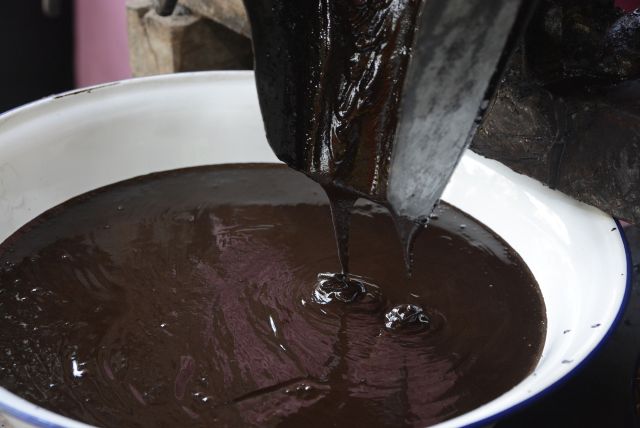DTI backs revitalization of local cacao industry
The Department of Trade and Industry Cebu provincial office is supporting the revitalization of the local cacao industry, considering its growing demand globally.
Cebu, where sikwate (native chocolate drink) is a common breakfast and snack fare, contributes less than 1 percent to the total cacao production in the country, reported by the Philippine Statistics Authority (PSA) at around 8,000 tons of cacao beans annually. About 80 percent is produced in Davao region.
Edwin Banquiero, DTI National Cacao Industry Cluster coordinator, said global demand for chocolate products has outpaced supply as raw material production is on a standstill.
Banquiero said a global shortfall may be expected by 2020.

Guilang Tableya
“While demand is on an uptrend, supply gap continues to exist due to pressure brought about by changing weather condition, pest and diseases, low productivity, aging trees, competing crops and unsustainable cacao farms, among other factors,” he said.
He said cacao production from the top producers is on a decline.
“The Philippines and other growing cacao regions can help in addressing the shortfall,” he added.
The DTI is spearheading the crafting of a national road map for the cacao sector called “2020 Cacao Challenge.”
Under this, the country has made a commitment to produce 10 percent, or some 100,000 metric tons of fermented beans by 2020.
Banquiero said the Philippines, in general, is a good place to grow cacao because it is on the equator and its climate and soil condition are favorable for cacao cultivation.
The industry road map targets expansion of production areas in Philippines and an increase in productivity from less than 1,000 beans per tree annually to 2,000 beans per tree. By 2020 also, the industry hopes to have 58 million cacao trees and as many as 130,000 farmers.
Banquiero said that they have been slowly implementing the road map since 2013. Since then, they have been conducting technology sessions to promote cacao farming in the Philippines.
Currently, their main industry concerns are access to and availability of quality seedlings, harmonization of a single production protocol accredited and accepted by the entire industry, establishment of quality standards, and the integration of support interventions from the various government agencies.
Top producers of cacao are Ivory Coast, with 1.41 million metric tons of beans; Ghana, 890,000 metric tons; Indonesia, 500,000 metric tons; Nigeria, 220,000 metric tons; and Cameroon, 210,000 metric tons. Africa produces majority, or 70 percent, of the world’s supply.
Disclaimer: The comments uploaded on this site do not necessarily represent or reflect the views of management and owner of Cebudailynews. We reserve the right to exclude comments that we deem to be inconsistent with our editorial standards.
